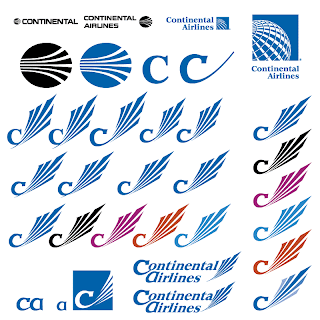One of the five tenets of Khol Design is "Primum non nocere", Latin for "First, do no harm." It is an ethical maxim taught to medical students worldwide and I believe it is a good principle to live by. That is why I have been torn for some time about posting this particular edition of brand doodle.
You see, EnerSys is a global leader in stored energy, i.e. batteries, for nearly every industry under the sun. A visit to their website reveals that they design, manufacture and supply batteries to light and heavy vehicles, reserve supplies for critical systems such as hospitals, and batteries for the aerospace and defense industries worldwide. Did I mention the defense industries? Yes, I did.
I have often rethought what I have posted so as not to close the doors on opportunities. But I've realized that this is rubbish. One's ethics lie in the integrity of their delivery. What, if not our declarations and consequent actions, will attest to what and how strongly we believe?
And this is why I've decided to revisit this logo and use it as a case to touch upon the ethics of design.
Here's the story:
Nearly a year ago, on one of those commutes to NYC that I've mentioned before, I made a brief list of logos I spotted that needed some TLC. EnerSys made that list and when I looked them up several months ago, I was disappointed to find them immersed in defense and aerospace. They have created batteries for the F-18 Hornet, F-117 Stealth, Commanche and Apache helicopters, Harrier, Osprey, Blackhawk, F-16 and B-52, to name a few, and are hawking a battery called Armasafe Plus™ that, according to a downloadable PDF, is "Quite Possibly the World's Best Battery for Combat and Tactical Vehicles."
Now, if they were designing and manufacturing batteries for electric cars and selling the world on the necessity of renewable energy sources to power them, that's one thing, but I would have to return a resounding "No" to anyone asking me to apply my skills to anything delivering bombs to my neighbors.
You see, when I was of conscription age, former President George Herbert Walker Bush decided to declare war on Iraq for moving into Kuwait. I'll let you draw your own conclusion as to the why of the matter, since you've got Google at your fingertips.
My ethics prevented me from supporting the war, and my reaction was to stand my ground as a conscientious objector. I lost a few friends and really upset others with this decision, but I stuck to it because my conscience wouldn't allow any divergent conclusions. It was a guiding principle, and nineteen years on, through university, the workforce, graduate school and my career as a designer, that guiding principle remains.
You see, EnerSys is a global leader in stored energy, i.e. batteries, for nearly every industry under the sun. A visit to their website reveals that they design, manufacture and supply batteries to light and heavy vehicles, reserve supplies for critical systems such as hospitals, and batteries for the aerospace and defense industries worldwide. Did I mention the defense industries? Yes, I did.
I have often rethought what I have posted so as not to close the doors on opportunities. But I've realized that this is rubbish. One's ethics lie in the integrity of their delivery. What, if not our declarations and consequent actions, will attest to what and how strongly we believe?
And this is why I've decided to revisit this logo and use it as a case to touch upon the ethics of design.
Here's the story:
Nearly a year ago, on one of those commutes to NYC that I've mentioned before, I made a brief list of logos I spotted that needed some TLC. EnerSys made that list and when I looked them up several months ago, I was disappointed to find them immersed in defense and aerospace. They have created batteries for the F-18 Hornet, F-117 Stealth, Commanche and Apache helicopters, Harrier, Osprey, Blackhawk, F-16 and B-52, to name a few, and are hawking a battery called Armasafe Plus™ that, according to a downloadable PDF, is "Quite Possibly the World's Best Battery for Combat and Tactical Vehicles."
Now, if they were designing and manufacturing batteries for electric cars and selling the world on the necessity of renewable energy sources to power them, that's one thing, but I would have to return a resounding "No" to anyone asking me to apply my skills to anything delivering bombs to my neighbors.
You see, when I was of conscription age, former President George Herbert Walker Bush decided to declare war on Iraq for moving into Kuwait. I'll let you draw your own conclusion as to the why of the matter, since you've got Google at your fingertips.
My ethics prevented me from supporting the war, and my reaction was to stand my ground as a conscientious objector. I lost a few friends and really upset others with this decision, but I stuck to it because my conscience wouldn't allow any divergent conclusions. It was a guiding principle, and nineteen years on, through university, the workforce, graduate school and my career as a designer, that guiding principle remains.
So EnerSys, if you're listening, here's the offer: If you stop catering to the destruction of other nations, harming man, beast and environment, and instead focus on sustainable energy for life-supporting enterprises, then give me a call. As you can see from the below, I have dreamt up a few choice new logos and would be happy to discuss your re-branding and repositioning strategies.
Or perhaps not, since you can't unbomb a village in Afghanistan.
Lose a few friends, upset a few others. The alternative is more perilous, for, as Alexander Hamilton put it, "Those who stand for nothing fall for anything." And the fall from your guiding principles is high and hard.
What are your guiding principles?



































